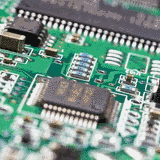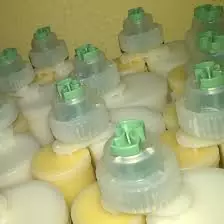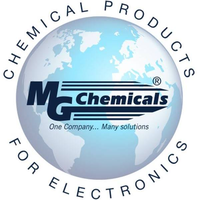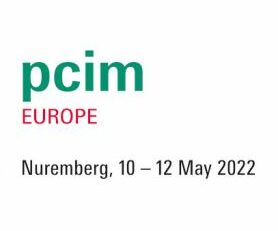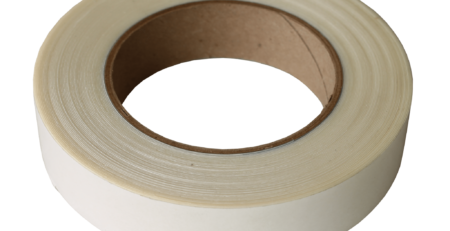LCP films and LCP laminates
Liquid crystal polymers are categorized as high performance polymers that offer a wide range of applications in different industries. This is primarily because they possess several broad properties that set them apart from other classes of polymers.
In this article, we will take an in-depth look at the concept of LCP films and LCP laminates. The discussion will also focus on understanding various aspects of these materials and how they contribute to the industries that depend on them.
But before we get to our main topic, let's first understand some basic properties of liquid crystal polymers.
Properties of LCP
Liquid crystal polymers are one of the most widely used classes of polymers, known for their versatility and their ability to serve a wide range of applications. These are extremely high-performance polymers that can easily be used for various applications, which we will discuss in the later sections of this article.
However, when we talk about the properties of liquid crystal polymers, they are not limited to just the general category. Rather, they can be subdivided and categorized depending on the application. In this section we will discuss the mechanical, physical, thermal and other general properties of liquid crystal polymers.
Mechanical properties
elasticity
One of the unique mechanical properties of liquid crystal polymers is their soft elasticity. It allows the material to scratch at near zero stress by assuming an equivalent state. When the polymers are deformed in the lines of the aligned direction, they show an equivalent elastic response. On the other hand, if the material is kept aligned for a longer period of time, a comparatively softer elastic response is observed.
Low creep behavior
Liquid crystal polymers are also known to exhibit little to no creep. This mechanical property of liquid crystal polymers allows complex processes to maintain their sharp edges and dimensional stability. This property of liquid crystal polymers also makes them suitable for participation in complex packaging designs.
These processes typically require fine details of positioning, alignment, and attachment of optical components. Therefore, liquid crystal polymers can also be used for packaging designs where fine detail is required along with dimensional stability. This gives liquid crystal polymers an advantage over other polymers.
Lower dielectric constant
Liquid crystal polymers are also known to have a comparatively lower dielectric constant and dissipation factor in the 1 kHz and 45 GHz range. This property of liquid crystal polymers makes them one of the most suitable options for applications such as the generation of mobile communication systems and automobiles.
For example, these polymers can also be used to make flexible circuit boards, and millimeter-wave radar boards require a material with a lower dielectric constant. Liquid crystal polymers therefore offer a far better opportunity to be used in complex processes, which is not usually possible with other categories of polymers.
Better radiation resistance
One of the lesser-known properties of liquid crystal polymers is their better resistance to radiation, far exceeding that of other types of polymers. Apart from that, it is also important to know that gamma radiation and UV radiation are far better in terms of radiation hardness among the different classes of polymers.
Although some classes of polymers such as acrylates and fluoropolymers also exhibit good radiation hardness, they are often susceptible to moisture. It acts as a barrier property in processes where a balance between the two classes of radiation is required.
thermoplasticity
Another remarkable property of LCPs is that they are thermoplastic. This allows them to reach an intermediate temperature where they appear as a liquid without breaking up into basic crystal structures. Liquid crystal polymers typically melt at 280 degrees Celsius and remain thermally stable at a temperature of 350 degrees Celsius.
This type of arrangement keeps the coefficient of thermal expansion at a lower level, allowing for a lower position in the direction of molecular alignment. Thus the actual value can be easily checked to a limited extent by removing the layers with the appropriate orientations to check their degree.
Thermal properties
It contains strongly anisotropic mesogens
They can contain highly anisotropic mesogens that are relatively sensitive to external fields, which is considered one of the most characteristic features of liquid-crystalline polymers. These include voltage, core field and electrical application as they have a characteristic orientation depending on the external field. This facilitates its use in a variety of use cases, including high-performance fibers and functional materials for engineering plastics.
This is also one of the main reasons why liquid crystal polymers are considered to be an extremely important category. They are therefore of great importance when trying to understand the role of properties in defining the applicability of a polymer.
beginning of melting
The differentiation of melting points is another important thermal characteristic of liquid crystalline polymers. This category of polymers is extremely high performing and offers excellent thermomechanical properties at a comparatively lower density.
However, it should also be noted that they have very high melting points, which makes processing them somewhat difficult for the relevant processes. In such cases, liquid crystalline polymers exhibit lower solubility when common solvents are used in a particular process. Therefore, these properties must be considered when deciding on a suitable application for liquid crystalline polymers.
Other general properties
Absorption
Liquid crystalline polymers absorb little to no moisture or other gases because they are densely packed and crystalline. This is the main reason that liquid crystal polymers are not only slightly opaque, but also have the physical properties that allow absorption at different levels.
This property of liquid crystal polymers makes it possible to prevent outgassing, which is a common problem with many other types of polymers. Therefore, they can be used in cases where a material with a high absorbency is required.
Electrical and optical properties
Looking at the basic structure of liquid crystal polymers, it becomes clear that they consist of loosely held liquid crystals. This is because the orientation of the liquid crystals can be easily affected by direct exposure to the electric field. This special property of liquid crystal polymers makes them an ideal material for applications such as the manufacture of liquid crystal displays (LCD). Liquid crystal polymers are made up of tiny particles of liquid crystals. Therefore, it is easy to influence them with an electric field to drive applications.
Applications of LCP
Liquid crystal polymers possess numerous physical, mechanical and thermal properties that make them an ideal material for a wide variety of applications. From complex industrial applications to the manufacture of products that we use in everyday life, they are used in many cases.
Here are some of the most important applications of liquid crystal polymers
cables and ropes
As we discussed in the mechanical properties of liquid crystal polymers, this material does not readily allow creep due to its high tensile strength. This special mechanical property of liquid crystal polymers is used in the development of high-performance ropes that can easily be used for longer loads.
In addition, liquid crystal polymers are also used to define temperature and chemical requirements to develop solutions that can solve degradation problems. These typically occur with existing fiber products that are not designed to address these complex issues. However, liquid crystal polymers are perfect solutions for the manufacture of steel and stainless steel.
Liquid Crystal Display (LCD)
As we saw with the electrical and optical capabilities of LCPs, these polymers are also used for liquid crystal display (LCD) development. At this time, the electro-optical performance is improved due to the effect on liquid crystals to enable better display. In addition to evaluating electro-optical performance, correlations between molecular structures and their impact on LCD performance are also considered.
The beginnings of using liquid crystal polymers for the development of LCDs date back to 1888. The liquid crystal phenomenon was first observed by the Austrian botanist Reinitzer. He found that a solid sample of cholesterol benzoate slowly turned into an optically anisotropic liquid at a temperature of 145 degrees Celsius.
Further connections between LCP and LCD were later discovered by various research groups looking for new functional principles for displays. However, it is important to note that the identification of LCP's unique electro-optical properties has always played a central role in the identification of the compound.
Photo alignment of LCP film can be used as a resolution to create workable fixation solutions. In this way, the diverse physical and mechanical properties of liquid crystal polymers are used to develop and improve performance.
Electronic Aids
Liquid crystal polymers are also an excellent material for the manufacture of printed circuit boards with fiber optic reinforcement materials and the implementation of wire reinforcements. This is due to the high dielectric strength, which helps increase temperature resistance. It is necessary to deal with moisture resistance, which leads to better efficiency in terms of electricity to prevent possible leakage currents.
This particular combination is also well suited for dimensional stability in the development of advanced electronic tools. This is why liquid crystal polymers are a viable option for the development of advanced electronic devices.
leisure and recreation products
In addition to the development of electronic and technical aids, liquid crystal polymers are also ideal for the production of luxury and leisure items. These products typically include fishing lines and poles, water sports equipment, snowboards, winter sports equipment, and other sporting goods. The main reason for using liquid crystal polymers in the development of these products is their excellent performance, which is a crucial factor in these cases.
When it comes to sporting goods, safety is just as important as the ability to perform well. It also helps develop properties such as unique vibrations combined with high strength and excellent resistance to rough surfaces.
Aerospace
One of the lesser-known uses of liquid crystal polymers is in aerospace. The existing aerospace industry places high demands on the coatings used for aeronautical structures. Temperature and pressure fluctuations lead to different dimensional changes in the structure of the equipment, so it must have high tensile strength. This is where the role of the liquid crystal polymers comes in, as they form the perfect coating with the right strength to meet the demands.
They are primarily used in aircraft fluids, which is a quality-intensive use case. Thus, liquid crystal polymers contribute to the diverse applications in the aerospace industry.
Innovative composite materials and textiles
As already mentioned, liquid crystal polymers have essential chemical properties that can be used for a variety of applications. One such likely application is in innovative textiles and composites, which offer new opportunities for material identification and design.
The material is used in a number of cases to develop these products due to its high strength and low absorption. Liquid crystal polymers are high modulus thermoplastic matrix fibers used for various applications requiring relatively high density. In addition, they must maintain their properties over a wide temperature range and be used in areas with low humidity and low absorption.
Because liquid crystal polymers exhibit all of these properties with excellent results, they are often considered to be the ideal material for the needs of the composites and textile industries. Thus, LCP is an integral part of the textile industry's requirements and the evolution it needs to run better.
Other industrial applications
Apart from the requirement-specific applications, liquid crystal polymers are also helpful in developing solutions for various industrial needs. For example, these fibers offer high stability to most chemicals, expanding the possibilities for manufacturing chemically resistant articles. Another possible case is protective clothing such as hats, gloves and other workwear, which is usually in demand on a regular basis.
This material's ability to provide excellent cut and puncture resistance with optimal temperature control ensures longevity. Therefore, it becomes easier to manufacture products that require materials with similar properties.
From the applications mentioned above, it can be concluded that liquid crystal polymers cover a wide range of applications. These use cases are not just limited to what is generally necessary, but also address the material requirements of different industries.
Conversion of LCP
As far as the conversion of liquid crystal polymers into other materials is concerned, it is first necessary to understand the mechanisms involved. The conversion of liquid crystal polymers into liquid crystals can occur via different mechanisms including thermotropic systems and lyotropic systems.
In thermotropic systems, the temperature is lowered by keeping the melting points below the standard point. By fixing the temperature, it becomes easy to convert the existing material into thermotropic liquid crystalline polymers.
Lyotropic systems, also referred to as liquid crystalline mesophases, facilitate the transformation of liquid crystalline polymers under appropriate temperature conditions. Examples include a mixture of soap and water that acts as a lyotropic liquid crystal.
liquid crystal polymer films
Liquid crystal polymer films are derived from a liquid crystal polymer resin and are manufactured using the melt extrusion process. In this process, the resin is extruded from a device and then further processed into a film.
This process is carried out with simple manufacturing methods to keep the production efficiency high and the cost comparatively low. However, it is generally considered an unsuitable method for manufacturing LCP films because it requires greater accuracy. In most cases, maintaining the required level and controlling the thickness of the foil is not easy.
LCP films are made from materials that are easily oriented when melted. This limits the solution casting manufacturing method as the material is subject to frequent fluctuations in strength. However, an improvement in the manufacturing process can lead to an increase in quality and productivity in the development of liquid crystal polyester films.
The solution casting process for more efficiency
Experts believe that better solutions must be found to increase the efficiency and quality of material production. The solution casting process is one such effective way to achieve this goal. In this method, resin pallets are dissolved in a suitable organic solvent and then cast onto a flat sheet that serves as a support. The final step involves shaping and drying the leftovers. With this method, each production unit can develop and deliver high-quality products that can easily overcome the existing challenges.
liquid crystal polymer laminates
Liquid crystal polymer laminates are a recent development in the commercial exploitation of liquid crystal polymer technology. Due to the sustained electrical properties of the liquid crystalline polymer, it is also used for lamination of printed circuit boards in electronic packaging. However, it is equally important to know that it is primarily used for high-speed electronic circuit boards that can be measured in the GHz range.
In addition, one must know that several research results have concluded that LCP laminates are not yet widely used for electronic packaging for various reasons. This is primarily due to the weak interaction between liquid crystal polymers and copper. Typically, the rough surface of copper coils is used to improve peel strength, which is an essential part of the lamination process.
However, the rough interface between liquid crystal polymers and copper structures is typically not suitable for high-speed circuit boards. Therefore, in such cases, a direct connection between the copper foil and the LCP films is required to obtain high surface energy in the material. Therefore, liquid crystal polymer and lamination usually find their application in electronic circuit boards.
The role of LCP films and laminates in the electronics market segment
Due to their wide range of applications, LCP laminates and foils occupy a dominant position in the electronics segment. They offer excellent electrical and mechanical properties, including high moisture barriers, frequency characteristics, and controllable coefficient of thermal expansion.
Because of its low moisture absorption and excellent dielectric performance, liquid crystal polymer is an ideal material for printed circuit board housings.
Demand for these materials from electronics manufacturers is increasing as LCP enables fast processing speeds. Therefore, these materials are considered the ideal prerequisite for the manufacture of electronic products.
Demand is no different even in the relatively small electronics industry. This is due to the advantage of high circuit density and faster processing speed. Devices such as mobile phones or mobile PCs require fast single transmission. LCP has these characteristics due to its properties. Therefore, the demand for LCP film is no different in these micro industries as well.
The global demand for computers has also increased in recent years. This particular situation also contributes to an increase in demand for raw materials, including liquid crystal polymers.
Looking at the recent trends in electronics production worldwide, the market has recovered rapidly on a global scale. Major consumer markets have also started to recover from the recent economic crisis due to the pandemic. Due to this rapid recovery, markets are expected to increase demand for raw materials in the electronics segment. Therefore, future trends for liquid crystal polymers are also expected to increase in demand.
Concluding remark
In summary, liquid crystal polymers play an important role in a wide range of applications in a wide variety of industries. This is mainly due to their versatility in terms of the traits and properties they possess. Although the existing technologies and the new methods we have developed are insufficient, there is still a lot of room for further improvement in this area.
These advances include, for example, LCP films and laminates, which serve a variety of purposes in developing better solutions and products. So there is still a need to find new ways of using these materials, taking inspiration from the traditional way to innovate.
